- The DFS confirmed that Kachi can produce battery-grade lithium carbonate (>99.5% purity) on-site without additional refining or processing. Management is actively seeking a strategic partner to advance the project towards production by 2027, which we consider a reasonable timeline
- LKE is trading at just $3/t LCE vs the sector average of $36/t, making it the most undervalued stock on our list of lithium juniors.
- LKE plans to divest its four non-core assets, strengthening its balance sheet and focusing all resources on the Kachi project.
- Lithium prices are down 66% YoY to US$10k/t vs the five-year average of US$21k/t. We believe current lithium prices are unsustainable, and below the break-even level for most large-scale development projects. Battery/EV manufacturers/miners are actively seeking stable/long-term supply sources. Given Kachi’s size, we believe LKE is an attractive M&A target for larger players.
- The sector has witnessed several M&A deals this year. Last week, Pilbara Minerals (ASX: PLS/MCAP: $9B) announced plans to acquire Latin Resources (ASX: LRS) for $560M, reflecting a 67% premium over LRS’s last closing price. LRS owns an advanced stage lithium project in Brazil. Last year, Stellantis (NYSE: STLA), the owner of auto brands such as Fiat, Peugeot, and Chrysler, acquired a 20% stake in Argentina Lithium & Energy’s (TSXV: LIT) projects for US$90M. LIT is an early-stage lithium junior in Argentina. Additionally, oil-rich nations like Saudi Arabia are actively diversifying into lithium and other EV metals. We believe these developments suggest positive M&A prospects for LKE.
- Upcoming catalysts include potential for M&A/JV/financing, and positive sentiment towards juniors focused on EV metals.
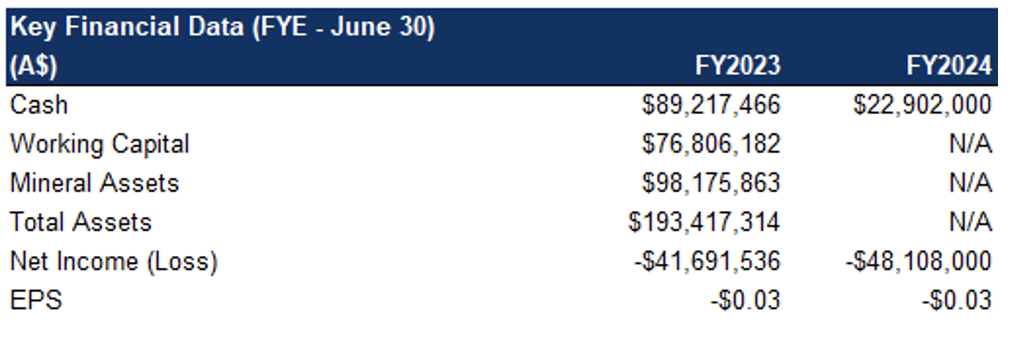
Price Performance (1-year)
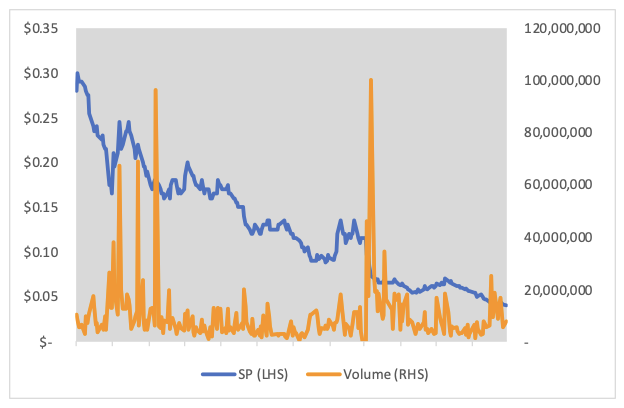
| |
YTD |
12M |
| LKE |
-76% |
-85% |
| ASX |
5% |
12% |
| HLIT (ETF) |
-45% |
-55% |
Portfolio Summary
Four lithium brine projects and one pegmatite project in Argentina. Argentina is the fourth largest lithium producer in the world, with the third largest reserve-base
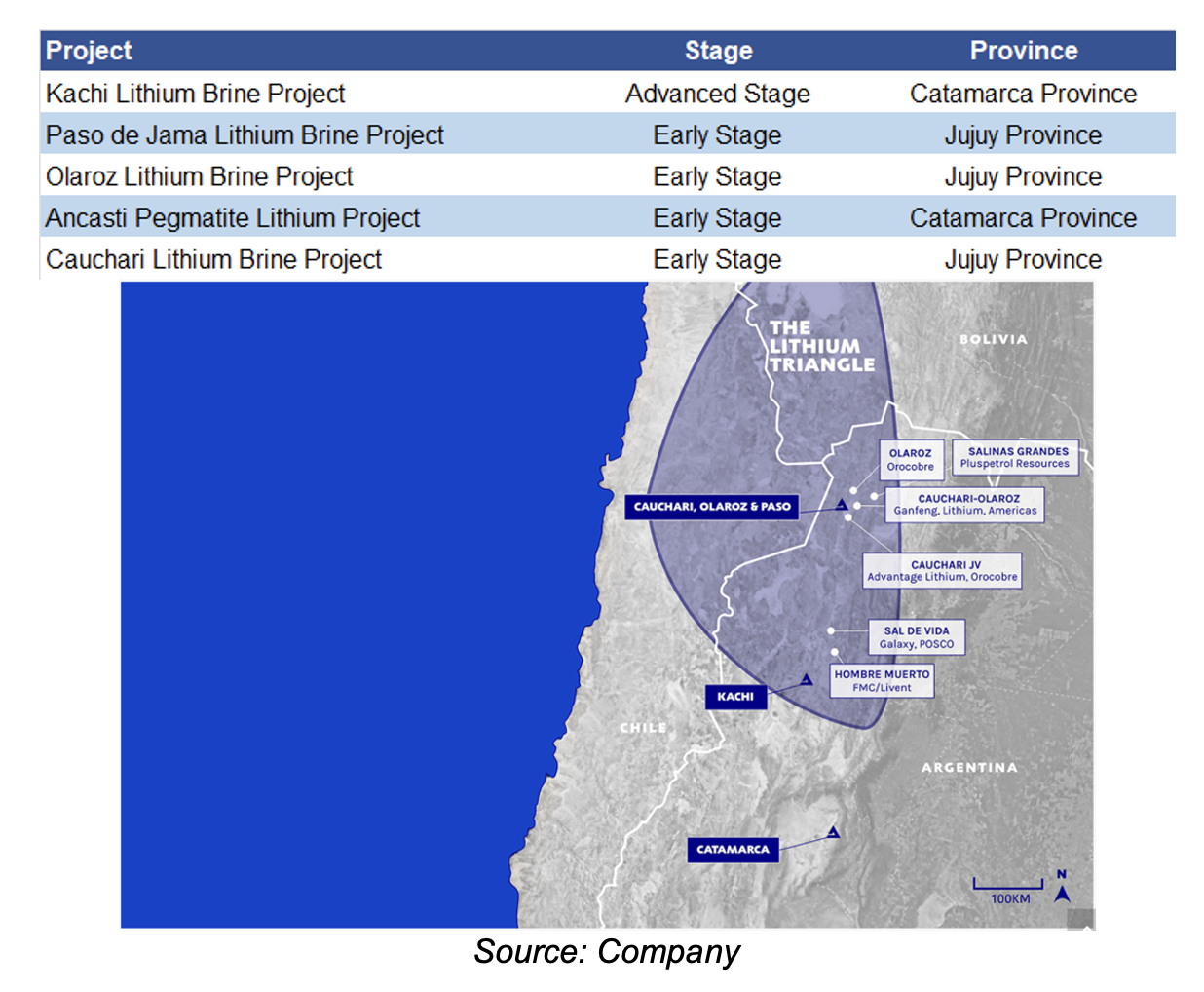
Close to well known lithium brine projects
Kachi Lithium Brine Project
This advanced-stage project, covering 103,898 hectares, is located in Catamarca province of north-western Argentina.
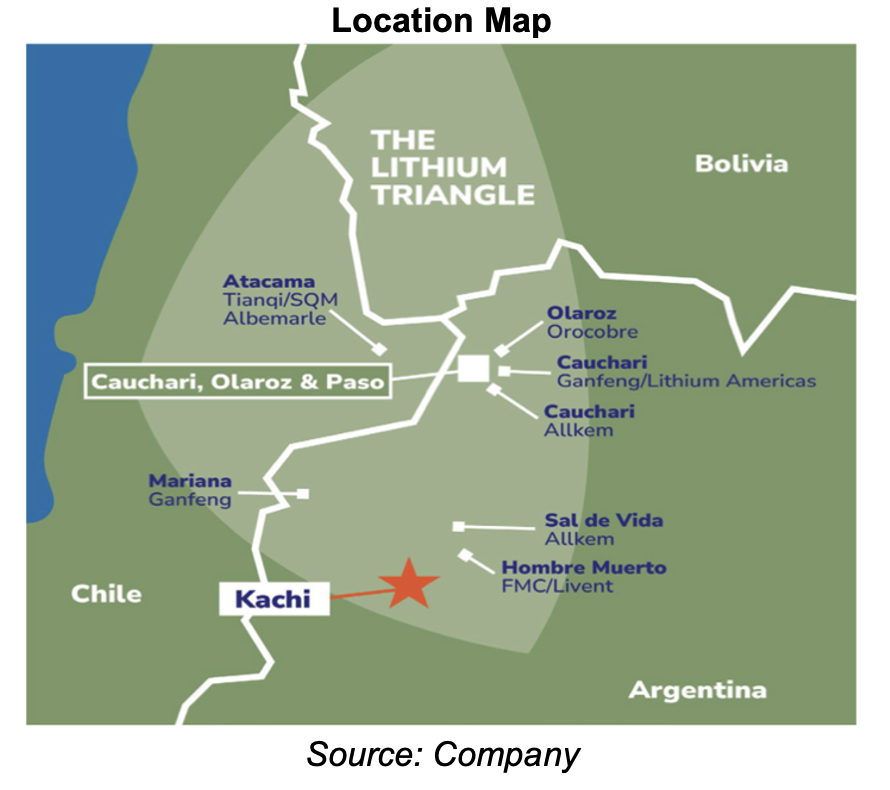
Located near Ganfeng Lithium’s (SZSE: 002460/ MCAP: $10B) Mariana lithium brine project, which is anticipated to start production later this year, as well as Arcadium Lithium’s (ASX: LTM/MCAP: $4B) Hombre Muerto lithium brine operation, and the Sal de Vida lithium brine development project
Mineralization, Resources, and DFS
10.6 Mt LCE at an average grade of 218 mg/L
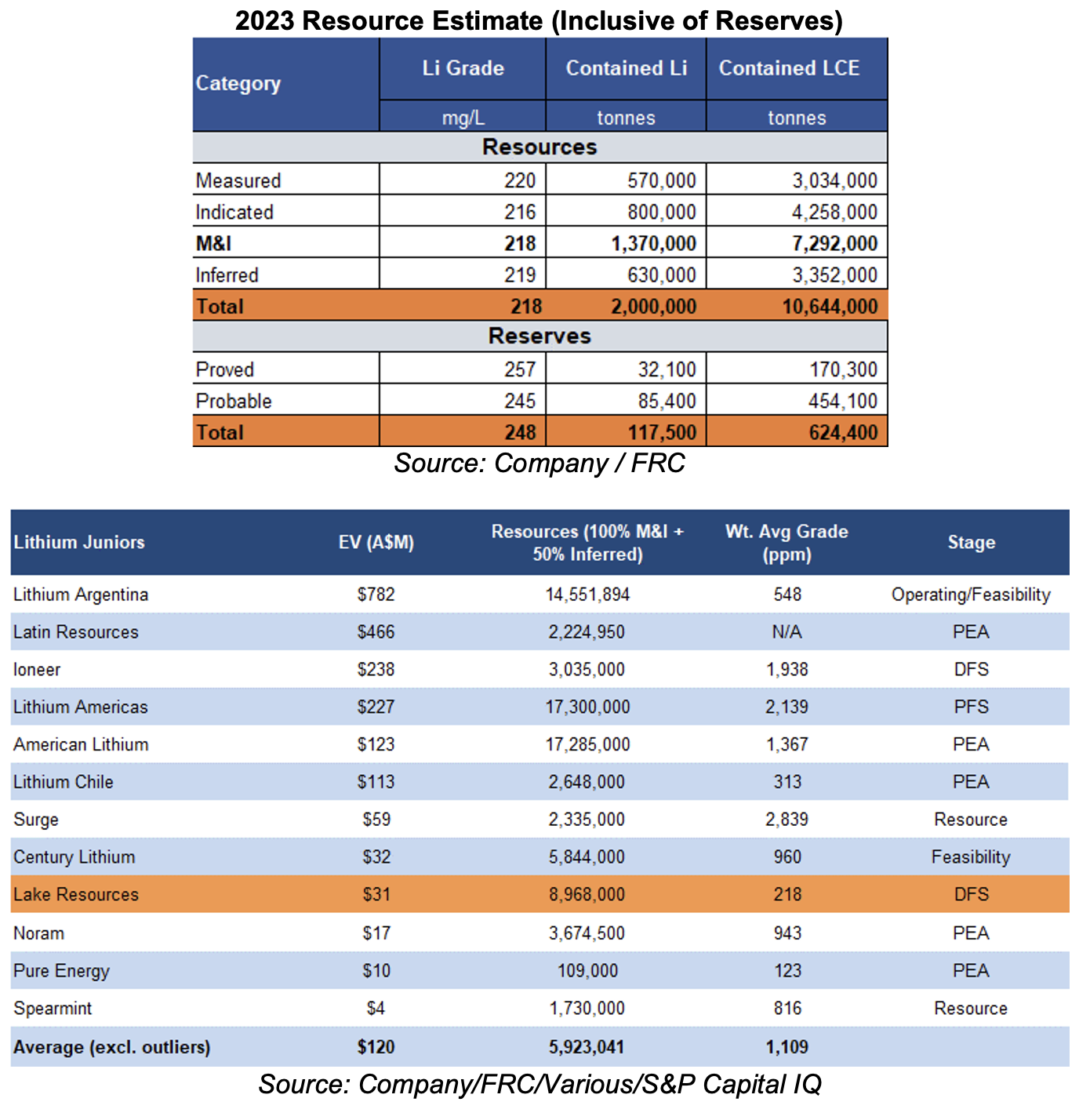
Kachi hosts a large tonnage-low grade deposit compared to other advanced-stage projects owned by juniors
In December 2023, LKE completed a Definitive Feasibility Study (DFS) based on a 25k tpa (tonnes per annum) operation, spanning 25 years.
We believe the DFS was conservative as it accounted for less than 12% of M&I resources.
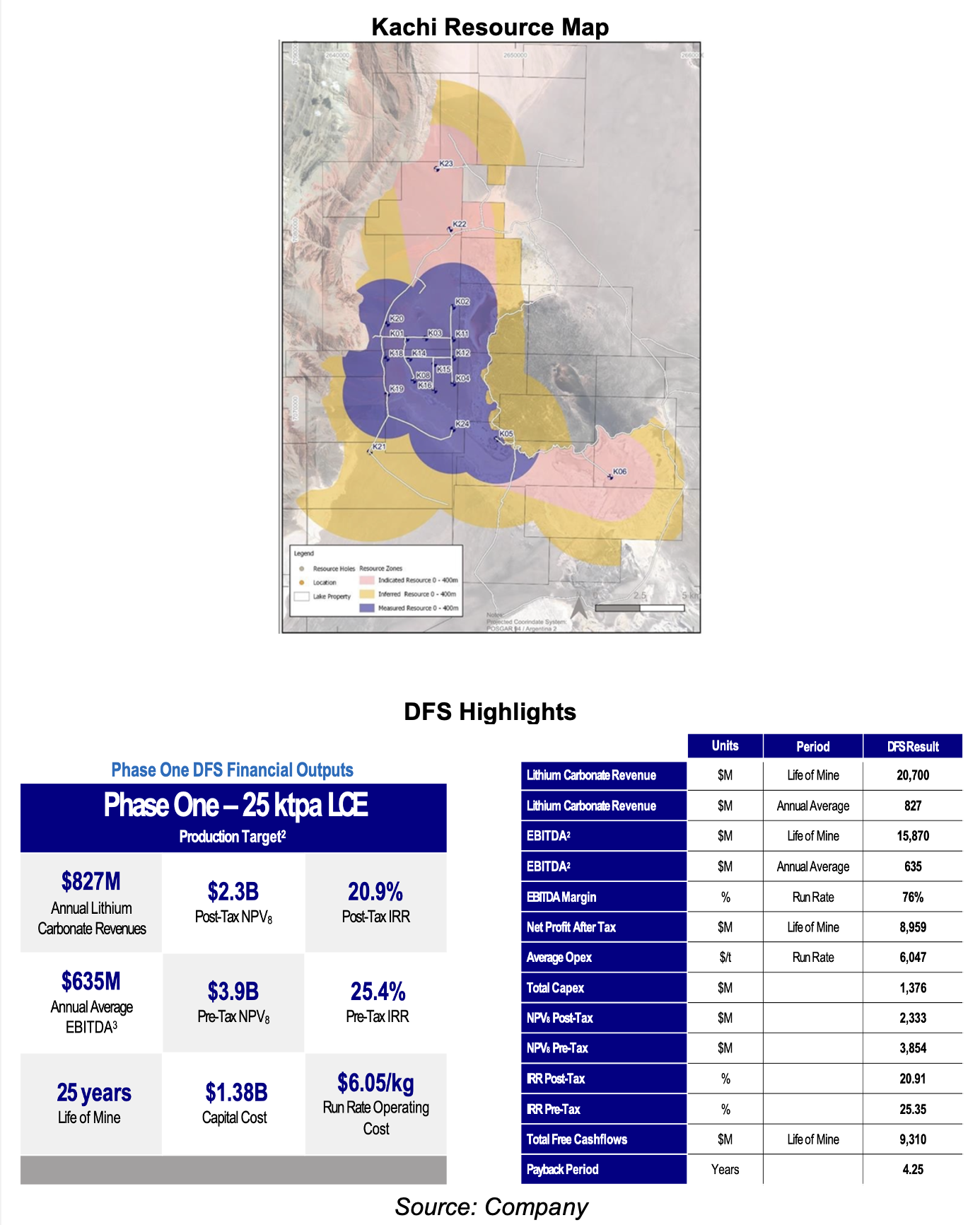
The DFS returned an AT-NPV8% of US$1.7B and AT-IRR of 18% using US$28k/t LCE vs the current spot price of US$10k/t. Although the DFS lacked NPV/IRR estimates for LCE prices <US$28k/t, we speculate it would have returned an AT-NPV8% of US$0.8-US$1.0B at a five-year average LCE price of US$21k/t
Initial CAPEX of US$1.4B, which we estimate is on the higher end among comparable projects
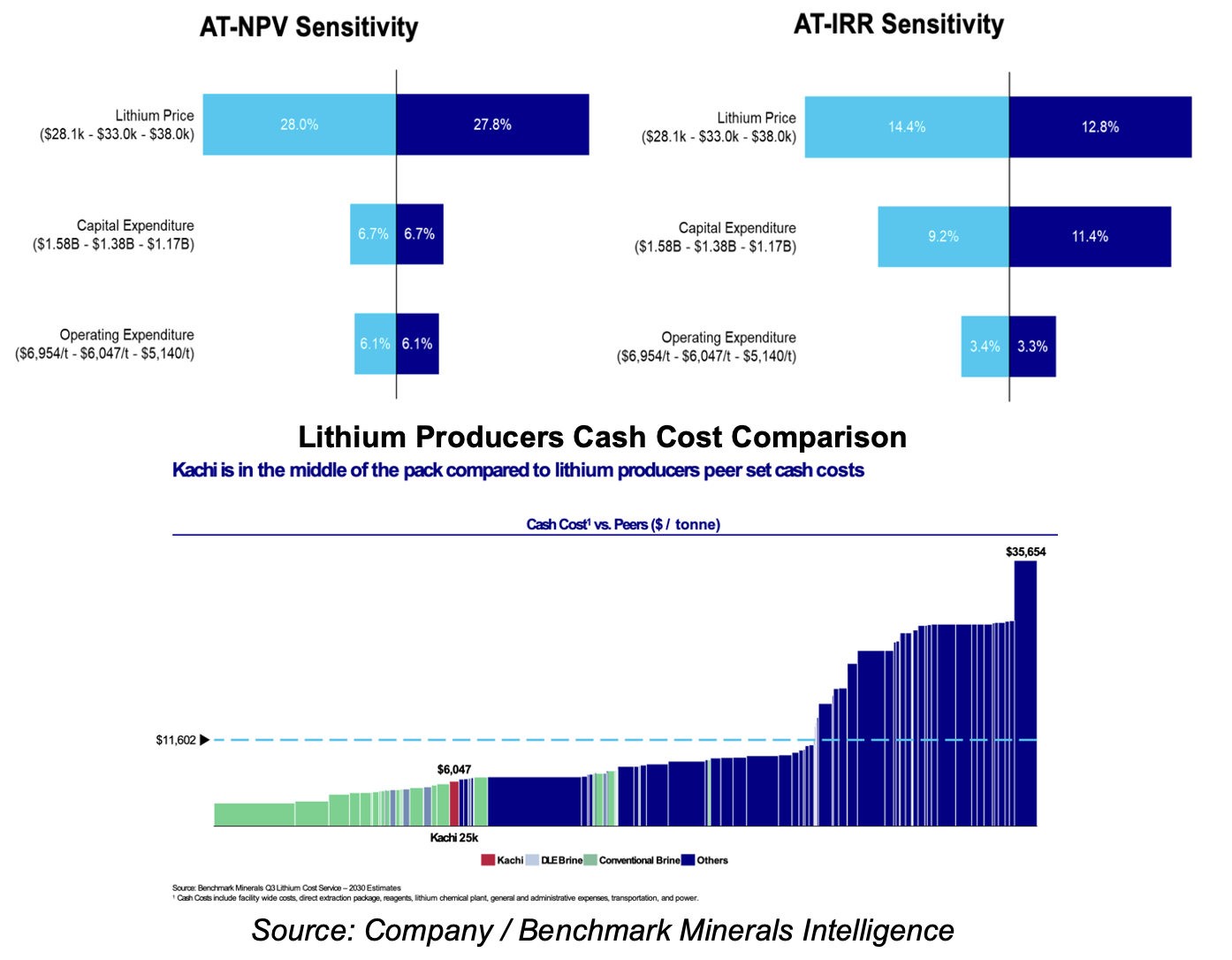
The DFS demonstrated that high-purity LCE (>99.5% purity) can be produced through an ion-exchange direct extraction technology (DLE).
NPV and IRR are highly sensitive to LCE prices. LKE's cash costs are on the higher end among comparable brine projects, but on the lower end relative to sector-wide costs
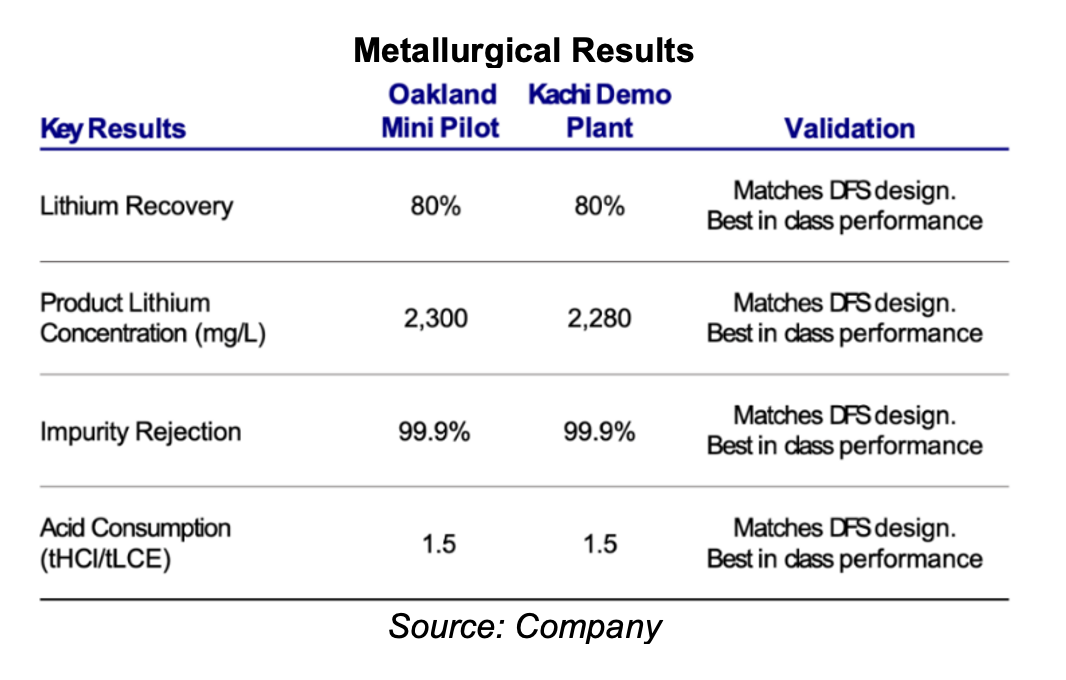
LKE's lithium recovery could be 80% vs 40%-60% for conventional recovery methods
Compared to solar evaporation, DLE processes are much faster and offer higher recovery rates, leading to potential economic and environmental advantages. By eliminating the need for extensive evaporation ponds, DLE reduces the land footprint and accelerates production timelines. Additionally, the ability to reinject processed water back into aquifers mitigates environmental concerns associated with traditional methods. That said, while DLE technologies have shown significant potential in laboratory and pilot-scale tests, large-scale commercialization is still in its early stages.
We believe DLE technologies offer a promising alternative to traditional lithium extraction methods
LKE has submitted an Environmental Impact Assessment (EIA), and signed a letter of intent (LOI) with an Argentine electric power company for a proposed power grid supply at Kachi.
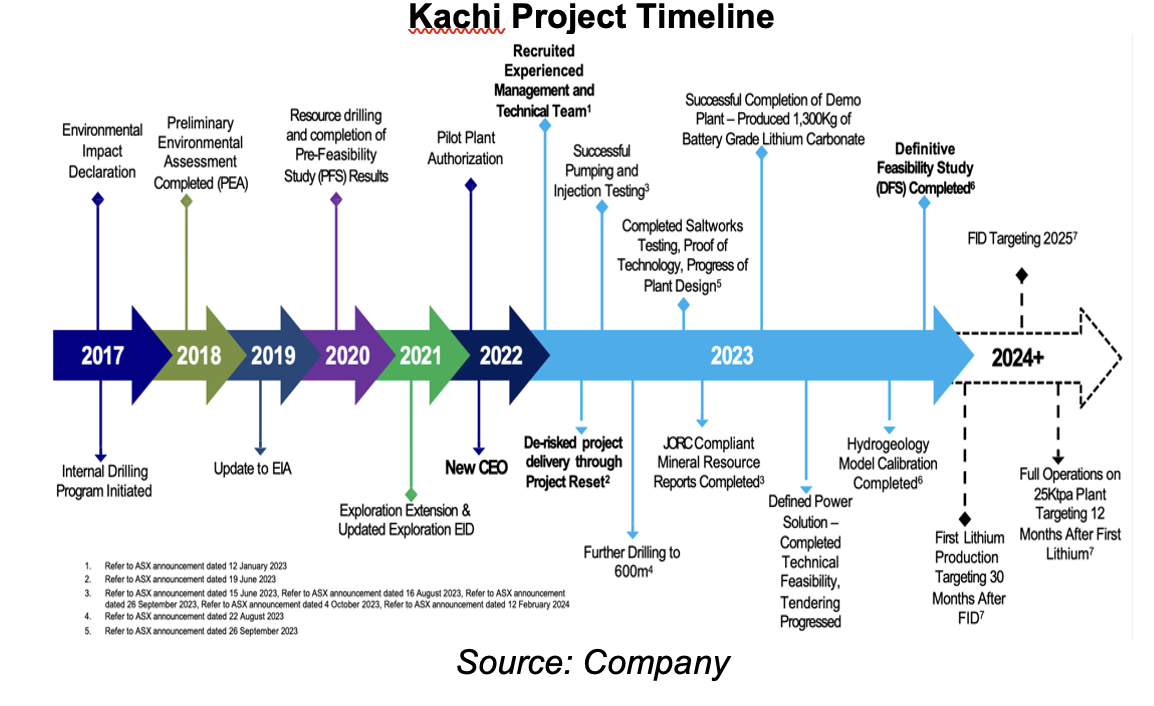
Management anticipates EIA approval by Q1 2025, and is actively seeking a strategic partner to advance the project towards production by 2027, which we consider a reasonable timeline
Financials
Strong balance sheet. Last month, LKE announced plans to reduce its workforce by 50% to decrease its burn rate, focusing on financing and offtake partners following the DFS
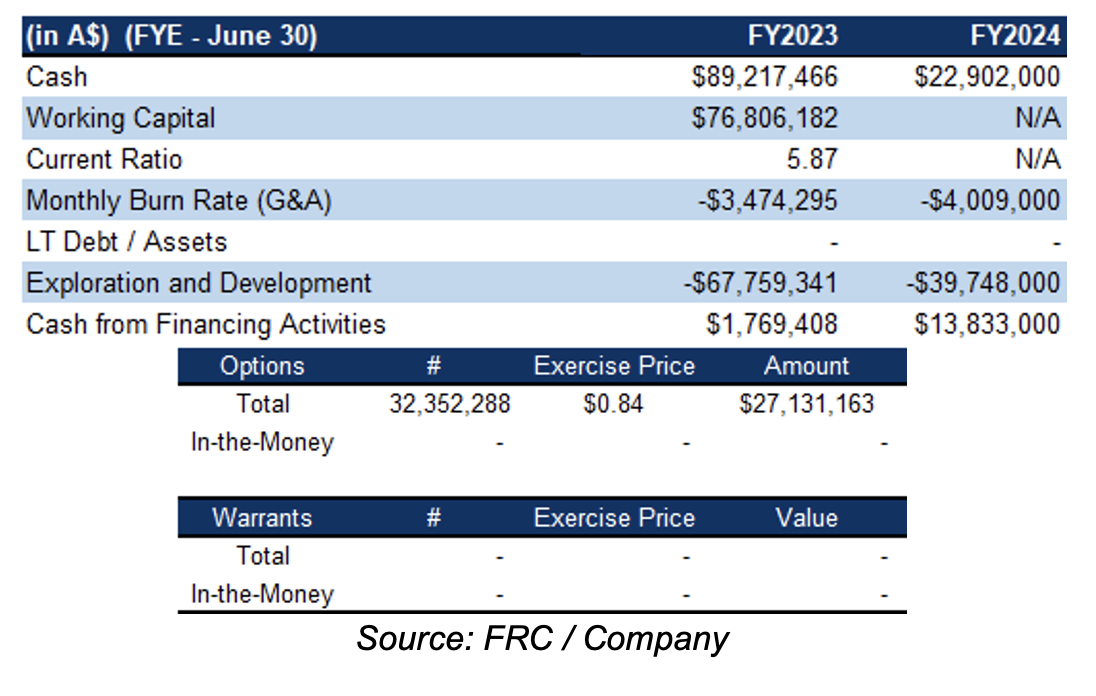
Comparables Valuation
LKE is trading at just $3/t LCE vs the sector average of $36/t, making it the most undervalued junior on our list

By applying $36/t to LKE’s resources, we arrived at a comparables valuation of $0.21/share
Discounted Cash Flow (DCF) Valuation
Our DCF valuation on Kachi, based on our conservative long-term LCE price forecast of US$15k/t, resulted in a negative NPV
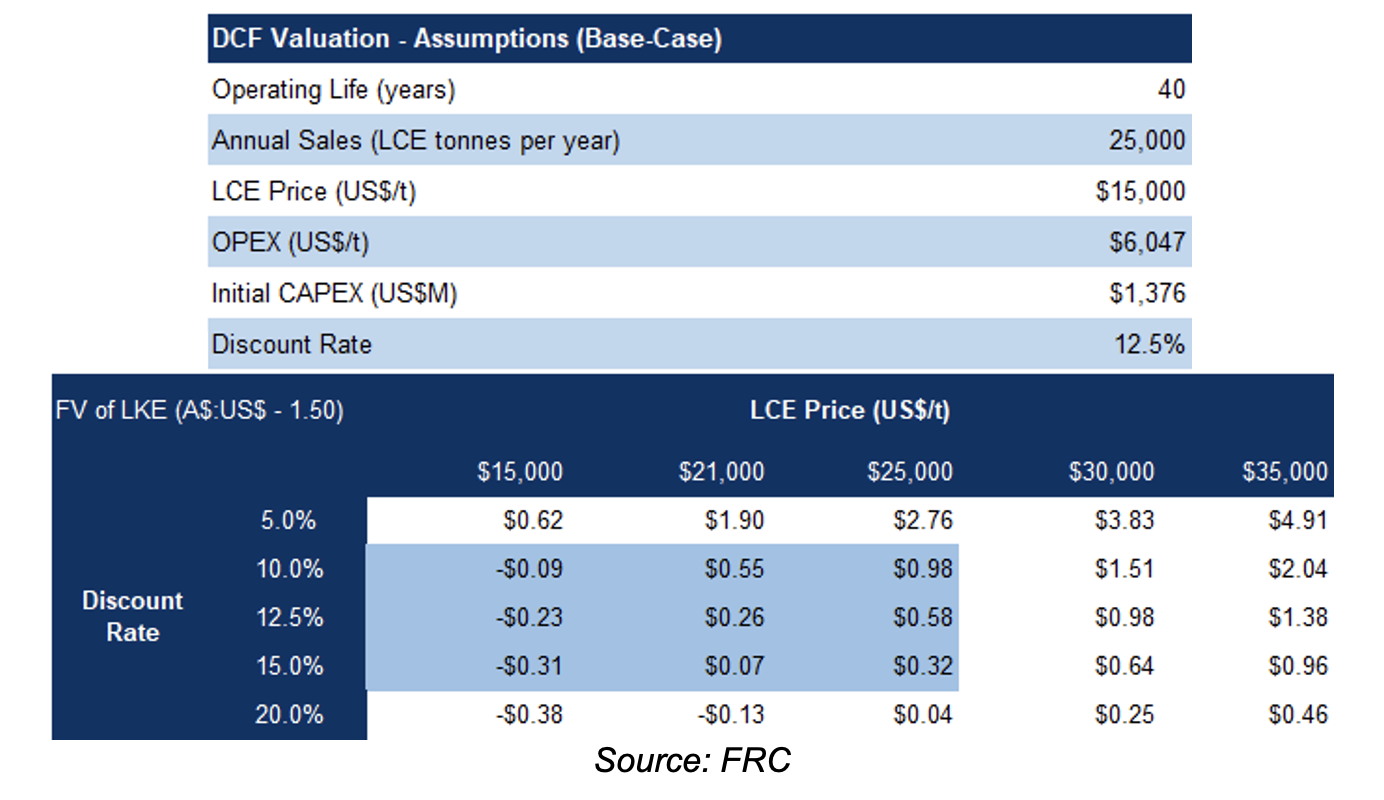
However, based on a five-year average LCE price of US$21k/t, our model returned an AT-NPV12.5% of US$269M, reflecting a fair value estimate of $0.26/share on LKE
Real Options Valuation
Our real options valuation is $0.18/share. We believe the real options valuation model is a good technique to value resource projects, as it factors in commodity price volatility, and management’s ability to pursue, abandon, or delay project development
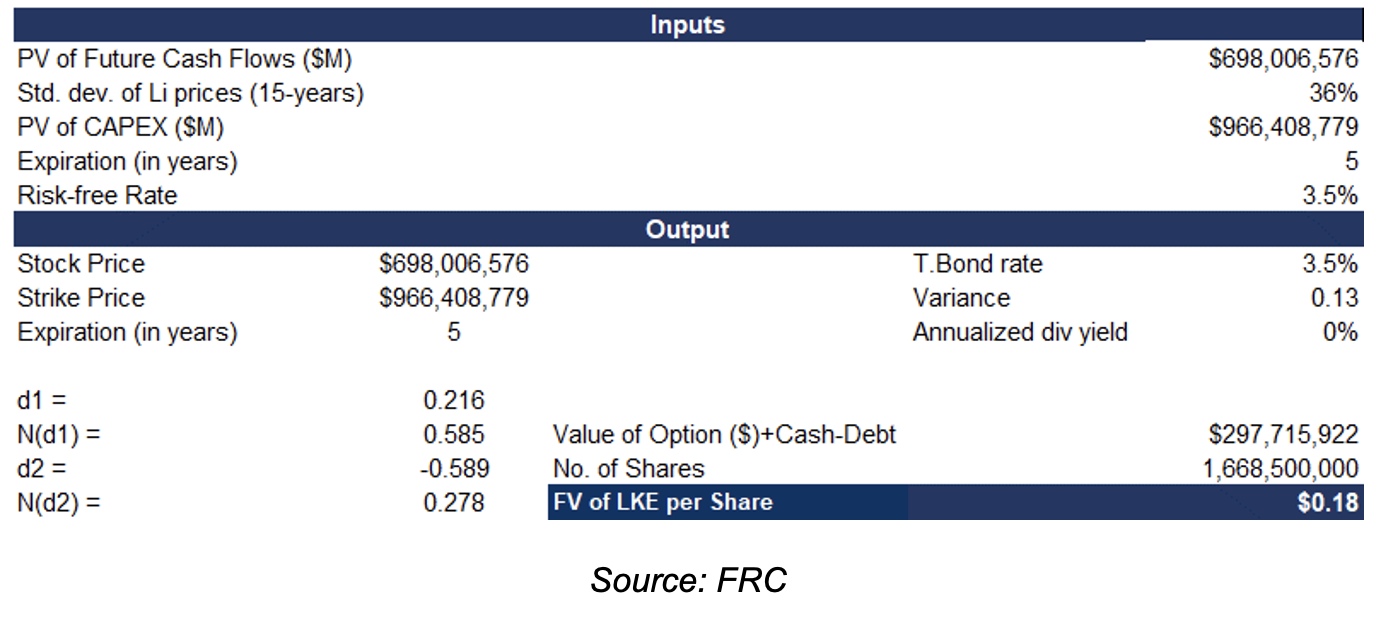
We are resuming coverage with a BUY rating, and a fair value estimate of $0.14/share (the average of our DCF, real options, and comparables valuations). Given Kachi’s size, we believe LKE is an attractive M&A target for larger players.
Risks
We are assigning a risk rating of 5 (Highly Speculative)
We believe the company is exposed to the following key risks (not exhaustive):
- Volatility in lithium prices
- Development
- High CAPEX
- Permitting
- Potential for delays in project financing and development
- FOREX

















